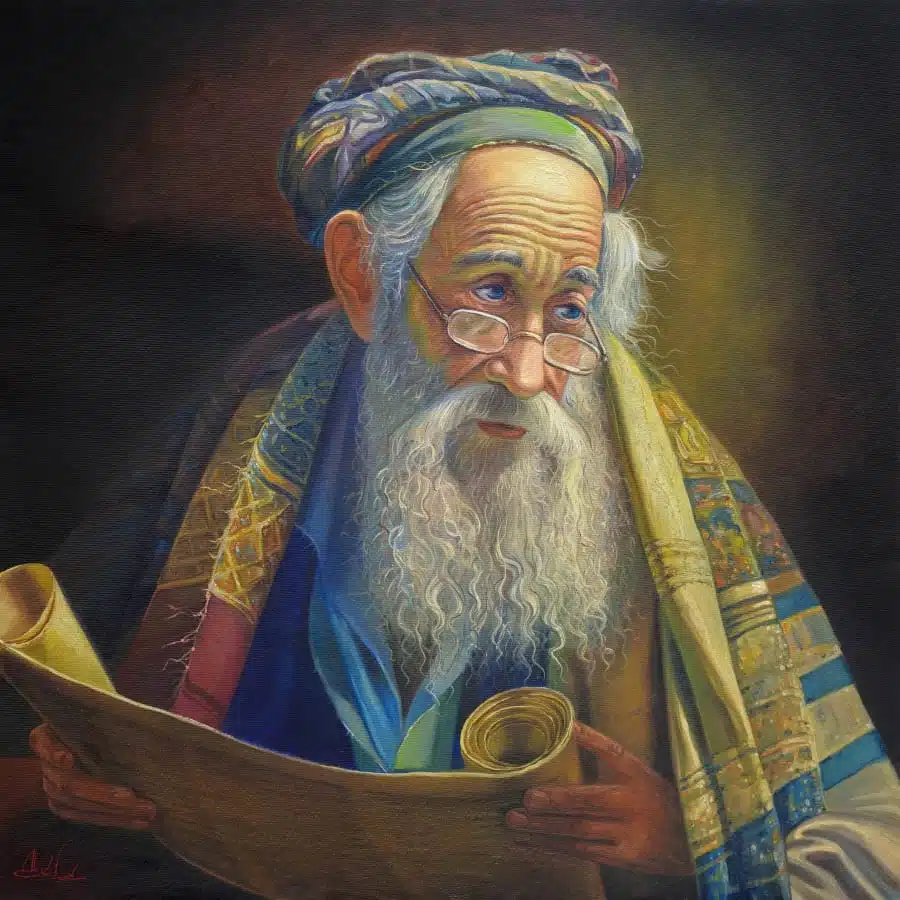Jewish art, rich in tradition and history, is deeply intertwined with the cultural and religious experiences of the Jewish people. Through the centuries, Jewish artists have used symbolism and motifs in their work to convey complex ideas, spiritual beliefs, and cultural narratives. These symbols are not merely decorative elements; they are imbued with profound meanings that reflect the essence of Jewish identity and tradition. In this article, we will explore some of the most common symbols and motifs found in Jewish paintings and their significance.
The Menorah: A Symbol of Light and Continuity
One of the most iconic symbols in Judaica art is the menorah, a seven-branched candelabrum that dates back to the time of the First and Second Temples in Jerusalem. The menorah is a powerful symbol of light, representing the divine presence and the eternal flame of the Jewish faith. In Jewish paintings, the menorah often appears as a reminder of the continuity of Jewish tradition and the resilience of the Jewish people throughout history.

The use of the menorah in art also reflects the idea of bringing light into the world, a core value in Jewish teaching. It serves as a reminder of the spiritual mission to spread knowledge, justice, and peace, embodying the hope that even in the darkest times, the light of faith and righteousness will prevail.
The Star of David: Unity and Protection
Another prevalent symbol in Jewish paintings is the Star of David, or Magen David, a six-pointed star that has become one of the most recognized symbols of Judaism. The Star of David is often interpreted as a symbol of unity, representing the connection between God, humanity, and the universe. In Judaica art, it is frequently depicted to invoke divine protection and to signify the unity of the Jewish people.
The two interlocking triangles of the Star of David are also said to represent the relationship between the divine and the earthly, heaven and earth, or spirit and matter. This duality is central to Jewish thought, where the spiritual and physical worlds are seen as interconnected, with each influencing the other.
The Torah Scroll: Knowledge and Tradition
The Torah scroll, containing the sacred texts of Judaism, is a potent symbol in Jewish paintings. The Torah represents the foundation of Jewish law, ethics, and spirituality. In Judaica art, the Torah scroll is often depicted as a source of wisdom and guidance, symbolizing the importance of education, tradition, and the transmission of knowledge from one generation to the next.
The depiction of the Torah scroll in art emphasizes the centrality of learning and the written word in Jewish life. It serves as a visual reminder of the covenant between God and the Jewish people and the responsibility to uphold the teachings of the Torah in everyday life.
The Tree of Life: Growth and Connection
The Tree of Life, or Etz Chaim, is a powerful symbol in Jewish mysticism and is often represented in Jewish art. The Tree of Life is seen as a symbol of growth, strength, and connection to the divine. In paintings, it may be depicted with roots deeply embedded in the earth and branches reaching towards the heavens, symbolizing the interconnectedness of all aspects of life.
The Tree of Life also represents the idea of spiritual growth and the journey towards a deeper understanding of God and the universe. In Judaica art, it can be seen as a metaphor for the continuous quest for knowledge and the nurturing of the soul.

Conclusion
The symbolism in Jewish paintings is rich and layered, offering a glimpse into the deep spiritual and cultural heritage of the Jewish people. Symbols like the menorah, Star of David, Torah scroll, and Tree of Life are not just artistic motifs but are carriers of profound meanings that resonate with the values, beliefs, and history of Judaism.
By exploring the symbols in Judaica art, we can gain a deeper appreciation of how these works of art communicate the enduring spirit and identity of the Jewish people. Whether you are an art enthusiast or a casual observer, understanding the hidden meanings behind these symbols can enrich your experience and connection with Jewish art.







